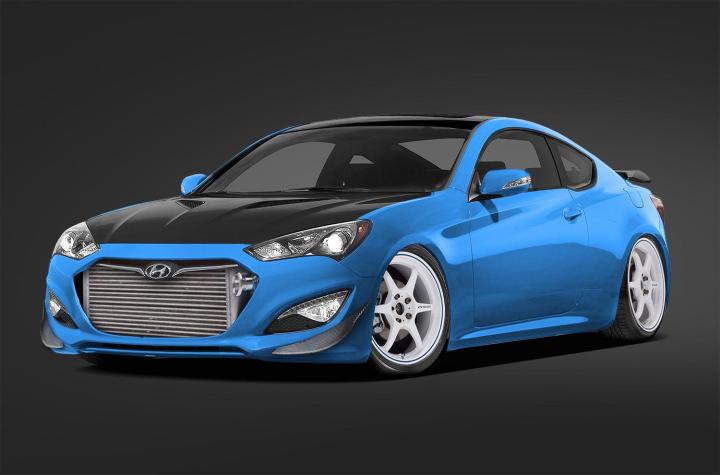
SEMA brings with it each year a slew of specially built sports cars. And this year, we’re getting a sneak peak at Hyundai’s offering. Pairing with aftermarket tuning company Bisimoto, Hyundai has created a souped-up version of its riotous Genesis Coupe.
You’ll notice the special bright blue paint, the missing grille exposing a huge radiator and intercooler, and in the back you’ll find a carbon fiber trunk lid. These are just the tamest of modifications, however.
Under the hood the engineers at Bisimoto took the stock, normally aspirated 3.8-liter V6 and yanked it from the car. While it was out, the team added Bisimoto-designed steel connecting rods, fuel injectors, and level 2.4 camshafts that probably make the thing lope like a muscle car.

From there Bisimoto bolted up twin Bisimoto/Turbonetics BTX6462 turbochargers and a long list of other parts, including; Godzilla blow-off valve; Dual RG45 wastegate; Arias forged pistons; Magnafuel 750 fuel pump; Custom smart ignition coils; Spearco intercooler; and Griffin radiator. Then they finished it all off with a Bisimoto-spec. Action Ironman clutch.
The result is 1,000 horsepower from a Hyundai that normally only makes 348 hp. Get this: Bisimoto is daring enough to declare the Korean sports car reliable.
“The key to producing reliable, high-horsepower engines goes well beyond the design, engineering and fabrication of performance parts. The core powerplant must be strong enough to withstand advanced modifications. The Genesis Coupe 3.8-liter Lambda engine is a thoroughly robust powerplant, and Bisimoto Engineering is excited to develop it to its full potential for the rigors of competitive motorsport,” said Bisi Ezerioha, owner of Bisimoto Engineering in a prepared statement.
Strangely, no performance figures have been given, which makes me wonder if they’re afraid to hammer it. When you squeeze extra power from an engine, its potential for catastrophic failure goes up exponentially. Effectively tripling an engines power output – no matter how good the baseline – will increase failure rates.
So, yes, we do want to drive the 1,000 hp Hyundai. Are we afraid we’d blow it up? Again; yes.


